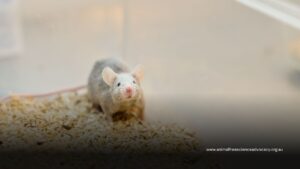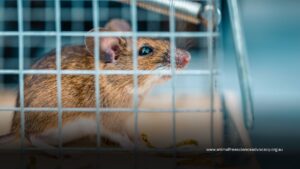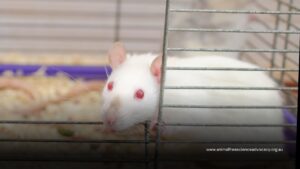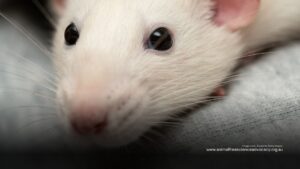Laboratory mice and rats are derived from a largely nocturnal and climbing ancestor and as such they retain many of the traits of their wild counterparts – exploratory activity, searching for food and climbing. They also like to compartmentalise their behaviours and often use urine marking and bedding to assist.
The Code of Practice for Housing and Care of Laboratory Mice, Rats, Guinea Pigs and Rabbits states:
“Animals must be able to perform a variety of natural activities consistent with species specific behaviour, including the opportunity for sufficient exercise within their enclosure”.
It also states: “The provision of environmental enrichment for mice and rats should mimic natural habitat and behavioural requirements including in particular tunnelling, foraging, climbing, social groupings and nesting.”
The current minimum standards, where these animals are kept in small containers, cannot accommodate the innate behavioural needs of a naturally foraging animal, nor allow for sufficient environmental enrichment.
For more information, download our fact sheet:
Bulletin 9 – Rats and Mice – Maligned & Misunderstood

Intermittent Fasting in Mice
Research paper Intermittent fasting increases energy expenditure and promotes adipose tissue browning in mice Nutrition 2019 Oct; 66:38-43. doi: 10.1016/j.nut.2019.03.015. 2019 https://pubmed.ncbi.nlm.nih.gov/31207437/ Bo Liu ,

Mice forced to inhale e-cigarette vapour during pregnancy
Research Paper: Maternal E‑Cigarette Exposure Results in Cognitive and Epigenetic Alterations in Offspring in a Mouse Model (2018) http://dx.doi.org/10.1021/acs.chemrestox.8b00084 Tara Nguyen, Gerard E. Li, Hui

Cigarette Smoking and Stroke Induced in Mice
Research paper citation Prior cigarette smoke exposure does not affect acute post-stroke outcomes in mice Austin V, Miller, A, Vlahos, R, Prior cigarette smoke exposure

Mice forced to inhale drugs and then killed for experiment on tuberculosis
Chan, J.G.Y., Tyne, A.S., Pang, A., McLachlan, A.J., Perera, V., Chan, J.C.Y., Britton, W.J., Chan, H.K., Duke, C.C., Young, P.M., & Traini, D. ‘Murine pharmacokinetics

Rats subjected to limited nesting stressor and then killed by decapitation
Maniam J, Antoniadis CP, Youngson NA, Sinha JK, Morris MJ 2016, ‘Sugar Consumption Produces Effects Similar to Early Life Stress Exposure on Hippocampal Markers of

Mice fed high fat diets, forced to fast, and then killed to study diabetes in humans – but results differ from human studies
Lamont, Waters & Andrikopoulos 2016, ‘A low-carbohydrate high-fat diet increases weight gain and does not improve glucose tolerance, insulin secretion or β-cell mass in NZO
